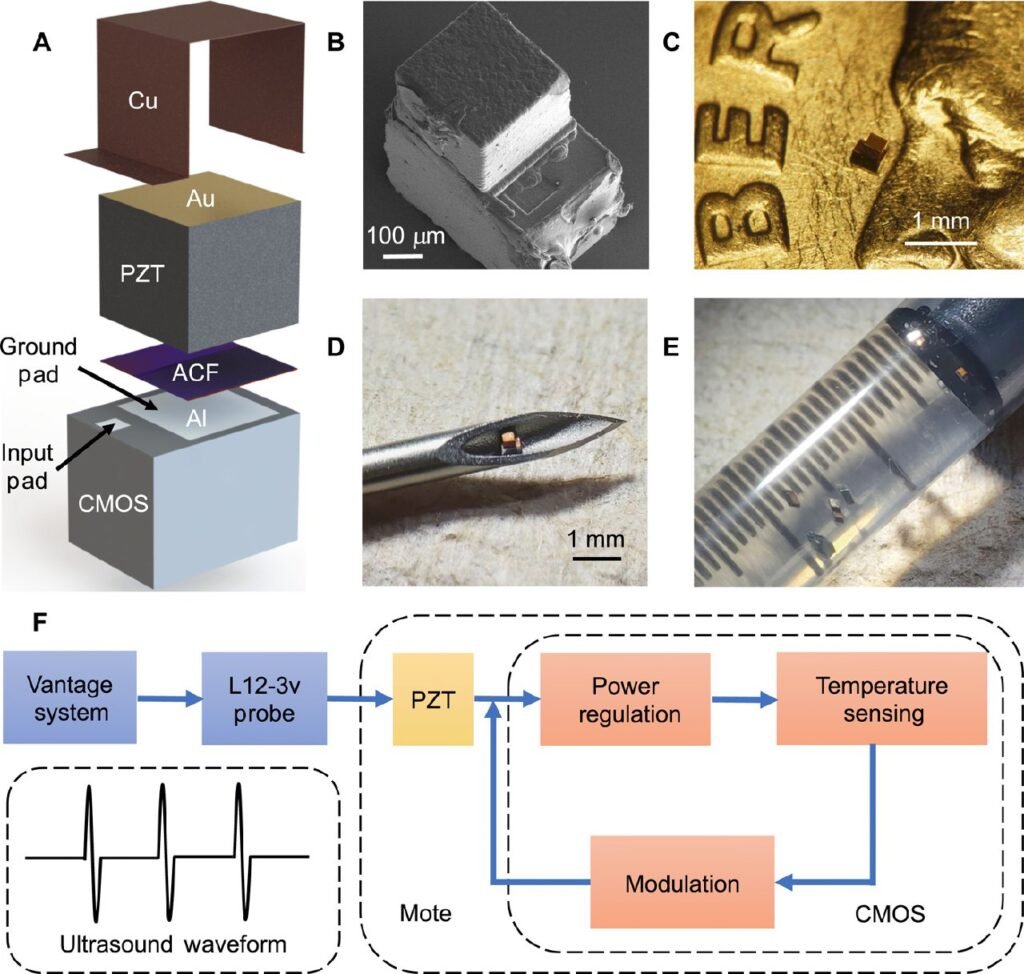Injectable Wireless Chip Uses Ultrasound
Engineers at Columbia University have developed a small, injectable wireless chip that uses ultrasound to track body processes. The computer is said to be the world’s smallest single-chip machine with a fully functional electronic circuit. The implantable chip can only be seen under a microscope and is paving the way for chips that can be inserted into the body with a hypodermic needle.
Full Body Monitoring
Wireless, miniaturised implantable medical devices for in vivo and in situ monitoring of all manner of medical conditions, including temperature, blood pressure, glucose, and respiration for diagnostic and therapeutic procedures, are of interest to researchers.
Implanted electronics are difficult to manufacture in large quantities because they require several chips, packaging, cables, external transducers, and energy storage batteries. Columbia University researchers claim to have developed the world’s smallest single-chip device, with a total volume of less than 0.1 mm3.F
Circuit Visible under Microscope
Only a microscope will reveal the whole system of this injectable wireless chip, which is around the size of a dust mite. The team used ultrasound to power the sensor and interact with it wirelessly in order to build the interface.

The breakthrough, according to study leader Ken Shepard, could pave the way for wireless, miniaturised implantable medical devices that can detect numerous objects inside the body. The researchers conclude that the device can be used in clinical settings and that it will eventually be accepted for human use.
Antenna for Communication
The team built an antenna that sits directly on top of the chip for communicating with and powering the sensor with ultrasound in injectable wireless chip. There is no need for extra packaging since the whole chip can be implanted and injected. It was made at the Taiwan Semiconductor Manufacturing Company, with additional process modifications made at the Columbia Nano Initiative clean room and the Advanced Science Research Center Nanofabrication facility at the City University of New York.
The research’s ultimate aim is to create wireless injectable chips that can be inserted into the body with a hypodermic needle and interact with the outside world through ultrasound to provide information about local body processes. The chip currently tests body temperature, but the team is working on expanding its capabilities.
